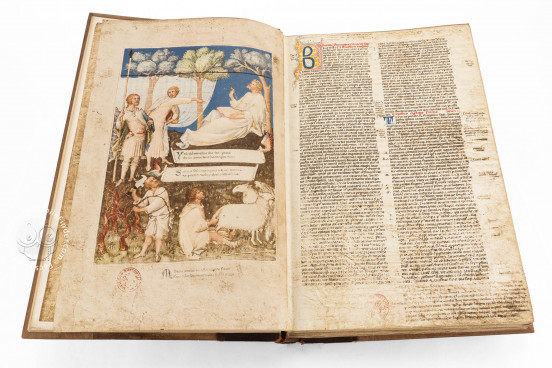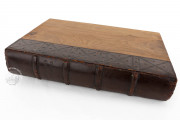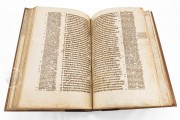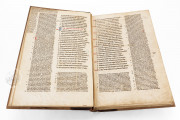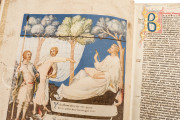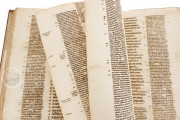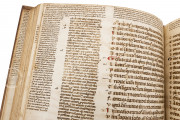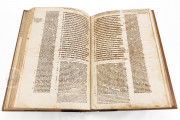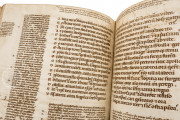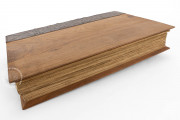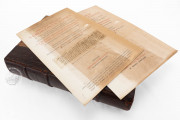Petrarch's Virgil is a manuscript of the poetry of the first-century BCE Roman author Virgil and other works of ancient Latin literature. The Italian poet Francesco Petrarca owned the large volume for most of his adult life. Perhaps made at the behest of Petrarch's father, Pietro di Parenzo di Garzo, the manuscript was copied by an Italian scribe in the first quarter of the fourteenth century. Petrarch annotated the manuscript over the course of decades and reportedly died with his head resting on the book. The manuscript is justly famous for its full-page frontispiece by Simone Martini.
Although known as Petrarch's Virgil, the manuscript includes the works of other classical authors. Besides Virgil's Eclogues, Georgics, and Aeneid with commentary by Servius (fols. 2r-233r), the manuscript includes the Achilliad of Statius (1st century CE) with commentary (fols. 233v-248v), four odes by Horace (65-8 BCE) with commentary (fols. 249r-250v), and commentaries on the fourth-century grammarian Aelius Donatus (fols. 251r-269v).
Allegorical Frontispiece
The added frontispiece depicts the ancient Roman poet writing his verses in a bucolic landscape. Servius, his fourth-century explicator, lifts a curtain to reveal the poet (fol. 1r). Also pictured are a military figure (often identified as a knight), a farmer, and a shepherd. The whole presents an allegory of the rhetorical styles and subjects of Virgil's poetry: the Eclogues treating the life of the shepherd, the Georgics that of the herdsman, and the Aeneid that of the military hero.
Painter and Poet Collaborate
Petrarch unquestionably dictated the iconography of the frontispiece, which he commissioned of his friend Simone Martini, one of the premiere Italian painters of his time. Petrarch composed (and physically wrote) the hexameter couplets in and under the miniature that help to explain its meaning. Perhaps created in anticipation of Petrarch's coronation as poet laureate in 1341, Simone intended the image for Petrarch's repeated contemplation.
The Ancients Annotated
Petrarch cherished his Virgil during his adult life and annotated it profusely: nearly 2500 annotations have been identified. These appear both in the margins and between the lines of the original text.
Often drawing on Servius's commentary, Petrarch comments on textual variants, offers some moral and personal observations, and extensively cites classical pagan and Christian authors.
Lost and Found
The manuscript is prized for Petrarch's autograph lament on the death of his beloved Laura (flyleaf verso). Petrarch also noted that the manuscript was stolen in 1326 (flyleaf recto). After he recovered it in 1338, Petrarch continuously annotated the manuscript until he died in 1374.
Cardinal Borromeo's Library
After Petrarch's death, the manuscript was owned by Giovanni Dondi dall'Orologio (d. 1389); the Visconti family; Galeazzo-Maria Sforza (1444-1476), Duke of Milan; Antonio di Pirro; and Abbate Maffa. It was purchased in 1600 by Federico Borromeo and entered the Biblioteca Ambrosiana upon its foundation in 1607.
We have 1 facsimile edition of the manuscript "Petrarch's Virgil": Francisci Petrarcae Vergilianvs codex facsimile edition, published by Hoepli, 1930
Request Info / Price
